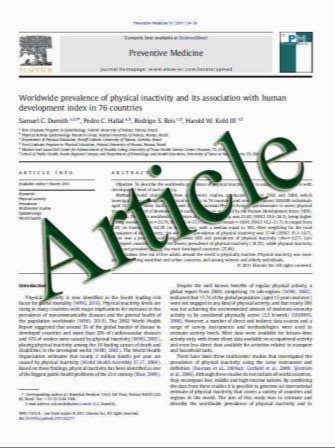The C Terminus of p53 Family Proteins Is a Cell Fate Determinant
- نوع فایل : کتاب
- زبان : انگلیسی
- مؤلف : Kelly Lynn Harms and Xinbin Chen*
- چاپ و سال / کشور: 2005
Description
The p53 tumor suppressor is the most commonly mutated gene in human cancers. The ability of p53 to induce cell cycle arrest, apoptosis, DNA repair, and other p53-dependent activities is well known; however, the mechanism by which p53 induces a specific activity over another is unclear. Here, we showed that stringent regulation of and by p53 family isoforms facilitates differential target gene expression and thus determines cell fate. Through the use of engineered deletion mutants, we found that activation domain 2 is required for induction of the proapoptotic target gene insulin-like growth factor binding protein 3 (IGFBP3) by p53 and that the basic domain inhibits induction of this gene by p53. Thus, for the first time we provide evidence that the basic domain of p53 is inhibitory in vivo as has been determined in vitro. We also showed that the in vivo inhibitory activity of the basic domain depends upon activation domain 1, such that combined deletion of activation domain 1 and the basic domain was required to alleviate the inhibition by the basic domain. Importantly, deletion of the inhibitory functional domains, namely N-terminal activation domain 1 and the C-terminal basic domain, is paralleled in nature. We found that the IGFBP3 promoter was activated by p53(NBD), which mimics a naturally occurring N- and C-terminally truncated human p53 isoform, and by p53AS, a C-terminally truncated murine p53 isoform generated through alternative splicing, but not by full-length human or murine p53. In addition, we found that the C termini of p63 and p73 inhibit the induction of IGFBP3, such that C-terminally truncated p63 and p73 isoforms induce the expression of IGFBP3, whereas full-length ones cannot. We also demonstrated that IGFBP3 is an important effector of the apoptosis induced by N- and C-terminally truncated p53, such that knockdown of IGFBP3 by using an IGFBP3 neutralizing antibody or IGFBP3 small interfering RNA partially rescues the cell death induced by N- and C-terminally truncated p53. In addition, we identified that histone deacetylase activity, not p53 DNA binding ability, governs the regulation of IGFBP3 by full-length p53 family proteins, as inhibition of histone deacetylases restores the induction of IGFBP3 by exogenous full-length p53, p63, and p73 proteins. Furthermore, we found that activation of p53 or inhibition of histone deacetylases alone was not sufficient to induce IGFBP3; however, combined treatment endowed endogenous p53 with this activity. To better understand the significance of this regulation, we performed a microarray study and identified several target genes differentially regulated by full-length p53 and p53 lacking the N-terminal activation domain 1 and the C-terminal basic domain. Taken together, our data suggest a novel mechanism by which p53 family proteins differentially regulate gene expression and provide an insight for designing a combined therapy for cancer treatment.
MOLECULAR AND CELLULAR BIOLOGY, Mar. 2005, p. 2014–2030 Received 4 October 2004/Accepted 29 November 2004


